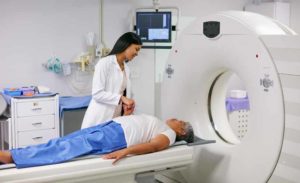 Successful equipment contracting and acquisition calls for supply chain executives to play a leadership role within their facilities and IDNs, according to those with whom the Journal of Healthcare Contracting spoke. That said, they will find a willing partner – their GPO – to help out.
Successful equipment contracting and acquisition calls for supply chain executives to play a leadership role within their facilities and IDNs, according to those with whom the Journal of Healthcare Contracting spoke. That said, they will find a willing partner – their GPO – to help out.
“Supply chain leaders should understand the entire capital equipment process – planning, acquisition, management and disposition – since each phase contributes to the optimum productivity of capital investments,” says David Heider, director of capital equipment services, HealthTrust. “Active management of the process is a critical part of a proactive, strategic capital program. That means engaging the right stakeholders across an organization, and employing the right processes and technologies, to drive key decisions—clinical, supply chain/contracting, IT, facilities, design/construction and finance, to name a few.”

David Helder
The successful supply chain executive knows how to get the right stakeholders in the equipment decision-making process, says Mike Clemens, vice president of sourcing operations, capital, construction and imaging, Vizient Inc. Decisions regarding high-ticket capital items often involve not only millions of dollars, but many clinical staff members as well, he says. “The worst thing is when the stakeholders can’t agree on the specifications of the equipment to be acquired,” he says. “A vice president of supply chain who can bring them together to make sure they are aligned, will be more successful.”
So too will supply chain executives who can use data to drive equipment purchases, he continues. “In the absence of data, opinion rules. The ones who can use and present data will be successful.”
Construction and renovation
Perhaps at no time is stakeholder alignment more critical than in new construction and renovation projects.
“When working on a new construction/renovation project, you want to have all the key stakeholders engaged as members of the project team throughout the full life of the project,” says Troy Hinojosa, EP project manager, MEMdata, a Premier Inc. company.

Mike Clemens
“Ideally you want to have many of the key components involved as early as the design phase of the project, and kept working together through its completion. This helps with cohesion and consistency, but also helps ensure that things don’t get overlooked or missed in the later stages of the project.”
The decision of whether or not to engage an equipment planner is one that often gets overlooked in the early stages of a construction project, says Hinojosa.
“It’s best to engage an equipment planner as early as possible during a construction project,” he says. “If brought on early in a project, the equipment planner will help the design team plan for the necessary construction impacting equipment. By working with supply chain personnel and end-users, the equipment planner can effectively plan for the right equipment, thus reducing the chances for costly change orders in the later stages of the project. By keeping the equipment planner engaged throughout the lifecycle of the project, the equipment list can be effectively managed, and kept up to date, reducing the need for re-work when the time comes to purchase new equipment.”
Some of the key questions that providers need to ask regarding equipment planning are:
- Is there someone on the project team who can plan for all of the medical equipment needed for the project?
- Does that person have the necessary experience with medical equipment planning to ensure the project’s successful outfitting?
- Does that person have a “regular job” from which they will be pulled away to do the equipment planning, or that might prevent them from devoting the necessary attention to medical equipment planning?
Just as the equipment planner should be brought into the planning process as early as possible, so too should supply chain, says Hinojosa.
“Engaging supply chain personnel at the end of a medical construction project – when procurement starts – doesn’t allow for them to have a full understanding of how and why specific equipment is on the equipment list, or to be able to provide information when first creating the equipment list (or even updating the equipment list after user input) that can eliminate issues when it comes time to purchase new equipment,” he says. “All of the members of the project team need to work together to achieve the common goal of successfully outfitting the new facility or space.”
Supply chain personnel can provide the equipment planner with information about standardization within the facility or system, and about preferred vendors, says Hinojosa. “By having this information available early on in the process, the equipment planner can specify equipment that falls in line with what the facility is already doing, or is used to, thus preventing the need for re-work when it comes time to purchase new equipment.”
Group buys

Don Weller
The group buy remains a reliable weapon in the GPOs’ capital equipment arsenal, but even that is changing.
“The HealthTrust Group Buy Program was created five years ago to aggregate large capital purchases during specific time periods, for identified product categories, to deliver greater value to our members and supplier partners,” says Don Weller, director of strategic sourcing, HealthTrust. “It has evolved in terms of the volume of purchases that flow through the program and the scope of product categories contemplated.
“We’ll be collaborating with many of our members that plan to deploy new capital equipment strategies over the next couple of years. HealthTrust’s role includes staying ahead of new technologies entering the market and their impact on capital planning and/or end-of-life, as well as ensuring that purchased devices will meet new IT security requirements.”
When Novation (now part of the Vizient brand identity) launched its group buy program in 2006, it was primarily for major imaging equipment, says Clemens. In 2011, when he joined the organization, the program generated about $190 million in contract spending.
In 2012, however, he brought a dedicated manager and analyst to the group buy program, and initiated some major changes. “We asked, ‘How can we better support our major anchor suppliers?’” he says. With that in mind, Vizient scheduled group buys in the fourth quarter of the vendors’ fiscal years whenever possible. “The suppliers were excited about it, because it would help them meet their numbers,” Clemens points out. Vizient members, in turn, got the best pricing available. In addition, Vizient’s field sales force is becoming more active in promoting quarterly group buys to their members.
Sales generated through the group buy program climbed to $540 million in 2012. Three years later, in 2015, volume reached nearly $1 billion, resulting in $270 million in member savings.
More recently, Vizient expanded the group buy project beyond capital equipment, to include such product groups as pharmaceuticals (including short-expiration products), and food and beverages. “It’s no different from what we’re seeing in the commercial and consumer market,” says Clemens. “Member hospitals are looking for cost savings and value, and by working with our supplier partners, Vizient is able to deliver significant additional value during the group buy.”
Members’ expectations changing
As GPOs modify their approach to capital equipment contracting, members are changing their expectations of their GPOs. According to Heider, those expectations include:
- Ensuring the GPO portfolio maximizes the scope of product categories covered by the portfolio.
- More robust cybersecurity to meet increasing IT-related requirements and protect electronic data.
- Shift from using the GPO as a benchmark, to expecting the lowest price and the opportunity to participate in GPO group/bulk buys and ad hoc or on-demand bulk buys orchestrated around specific customer groups.
- Expectation to have a full range of service options (full service to parts or labor only) as part of the equipment contract, as well as service provider options – e.g., parts suppliers, multi-vendor service, and third-party service by modality (e.g., anesthesia, nuclear medicine and flexible scopes).
- Increased interest and focus on the contract portfolio and capital program to address the non-acute market, including imaging and ambulatory surgery centers.
- Assurance of full contract value, including best pricing as well as an understanding of the total cost of ownership – e.g., construction impact, supply effect on the capital and service cost – based on an organization’s preferred service methodology.
- Capital expertise available as needed to assist with or supplement the provider’s current practices to ensure a disciplined, efficient process is in place to stretch limited resources for meeting capital equipment needs
“To meet these evolving needs, HealthTrust has developed a capital program to include not only contracts but also the resources, expertise and tools to assist providers (both acute and non-acute) in reducing costs and optimizing their capital process from planning and acquisition to management and disposal,” he says.
GPOs and big hospital systems are experimenting with new types of equipment contracts, including long-term (i.e., 10-to-15-year) deals. “But you have to be careful to protect yourself against obsolescence,” says Clemens.
GPOs are also working to bring the power of data to the equipment contracting process, says Hinojosa.
“Premier’s MEMdata website provides a process focusing on having a competitive environment drive procurement savings by use of a competitive bid process,” he says. “By utilizing Premier’s MEMdata capabilities, a facility’s supply chain executive is able to have the RFP process done for them, saving valuable time and providing them with the ability to allocate manpower and other resources to more urgent tasks. With overall quality of care becoming an increasingly important factor in determining overall compensation for services, the savings that MEMdata is able to provide our partner facilities often results in an improvement to quality of care and the patient experience. This is accomplished by providing supply chain executives access to affordable, high-quality capital equipment options while also providing some of the most accurate price benchmarking abilities in the industry, ultimately increasing a facility’s business intelligence and greatly enhancing the decision-making process.”
Emotional decisions
Capital equipment is often a huge investment, and big-ticket purchasing decisions are often emotional ones, says Clemens. “Think of how hard you think about a $30,000 investment on a car. Now think of agonizing over a $1.2 million purchase.
“It’s such a big dollar outlay, it’s still an emotional purchase. You’ve got people on one side looking at it as a business transaction, but you also have the physicians and technologists who were trained on a particular kind of equipment and who stake their reputation on it.
“It never gets old,” he says. “When you’ve seen one big capital purchase, you’ve seen one big capital purchase.”
